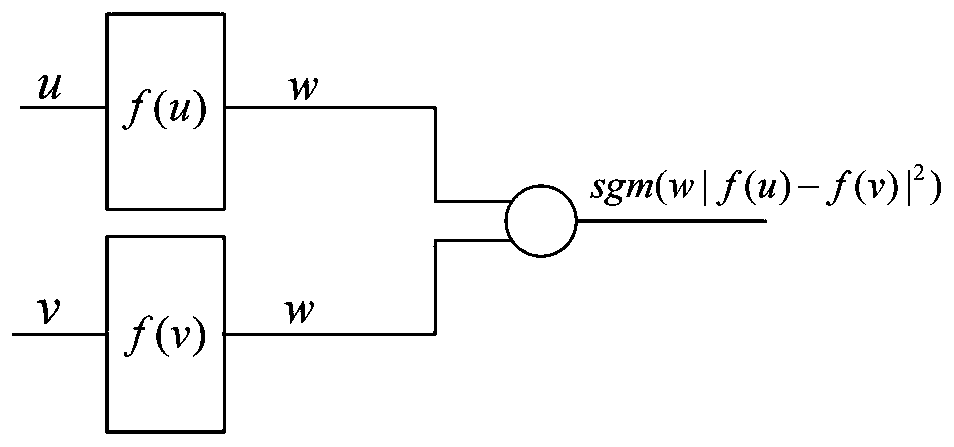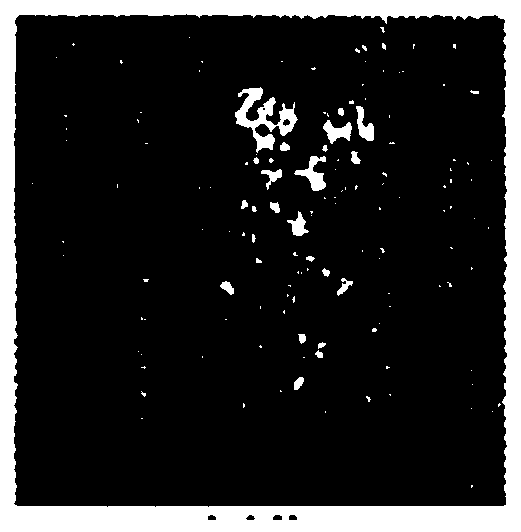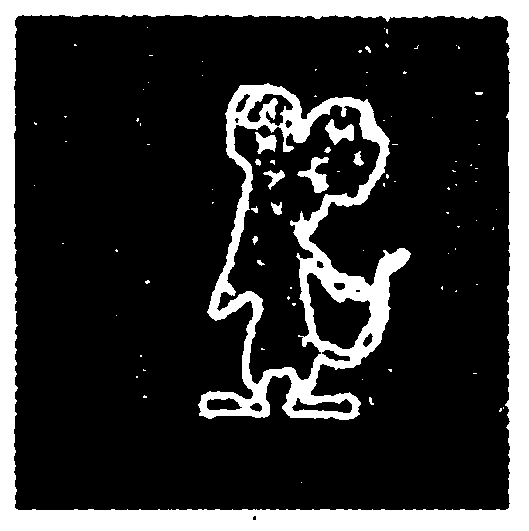Texture segmentation algorithm based on shape descriptor and twin neural network
A technology of shape description and neural network, applied in computing, image analysis, image data processing, etc., can solve problems such as grouping descriptor ambiguity, segmentation error, etc., and achieve good segmentation effect and good texture segmentation effect
- Summary
- Abstract
- Description
- Claims
- Application Information
AI Technical Summary
Problems solved by technology
Method used
Image
Examples
Embodiment 1
[0093] In the Siamese neural network structure, two symmetrical networks each have a fully connected layer. The input base shape descriptor is a 40-dimensional descriptor, that is, RGB channels, grayscale and 4 directional gradients on 5 scales, where the 5 scales are α=(10,20,30,40,50) . The output descriptor f of the Siamese network is the same as the number of hidden units used. The sigmoid function of the weighted difference of the two Siamese networks is used to compute the metric D for a pair of descriptors.
[0094] In order to compare the texture segmentation results, in this embodiment, the texture segmentation algorithm of the present invention is compared with the mcg, gPb, CTF, and STLD algorithms. Then, use ODS and OIS indicators to evaluate the algorithm's boundary accuracy and area accuracy. For all metrics, higher values indicate that the segmentation results are closer to the ground truth.
[0095] In this embodiment, the Brodatz synthetic data set is us...
Embodiment 2
[0100] Experiment with real texture datasets. Use the literature "N.Khan, M.Algarni, A. Yezzi, and G. Sundaramoorthi. Shape-tailored local descriptors and their application tosegmentation and tracking. In Proceedings of the IEEE Conference on ComputerVision and Pattern Recognition, pages 3890–3899, 2015" The 128 images in the dataset and the 150 images in the Berkeley segmentation dataset are used as the training set, and the remaining images are used as the test set. Then, the algorithm proposed by the present invention is initialized by 5×5 standard block subdivision. The final segmentation result indicators are shown in Table 2. From Table 2, it can be seen that the texture segmentation algorithm of the present invention has the best effect on both the contour index and the area index.
[0101] Table 2 Results of Texture Segmentation Dataset
[0102]
[0103] Among them, a schematic diagram of the experimental results is attached Figure 9-15 shown. by attaching F...
PUM
 Login to View More
Login to View More Abstract
Description
Claims
Application Information
 Login to View More
Login to View More - Generate Ideas
- Intellectual Property
- Life Sciences
- Materials
- Tech Scout
- Unparalleled Data Quality
- Higher Quality Content
- 60% Fewer Hallucinations
Browse by: Latest US Patents, China's latest patents, Technical Efficacy Thesaurus, Application Domain, Technology Topic, Popular Technical Reports.
© 2025 PatSnap. All rights reserved.Legal|Privacy policy|Modern Slavery Act Transparency Statement|Sitemap|About US| Contact US: help@patsnap.com



